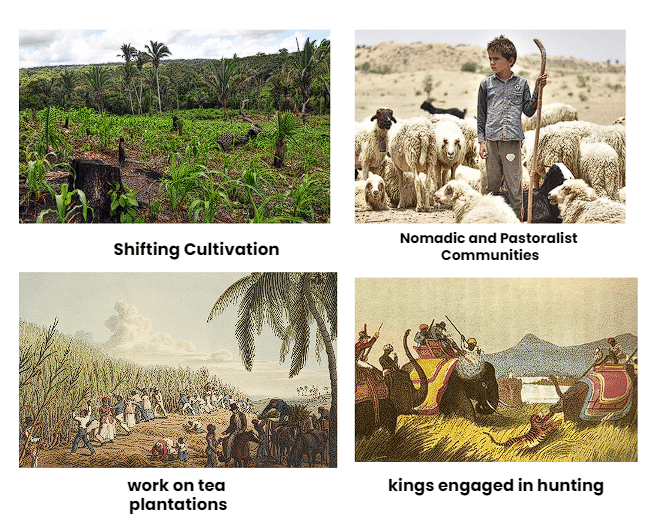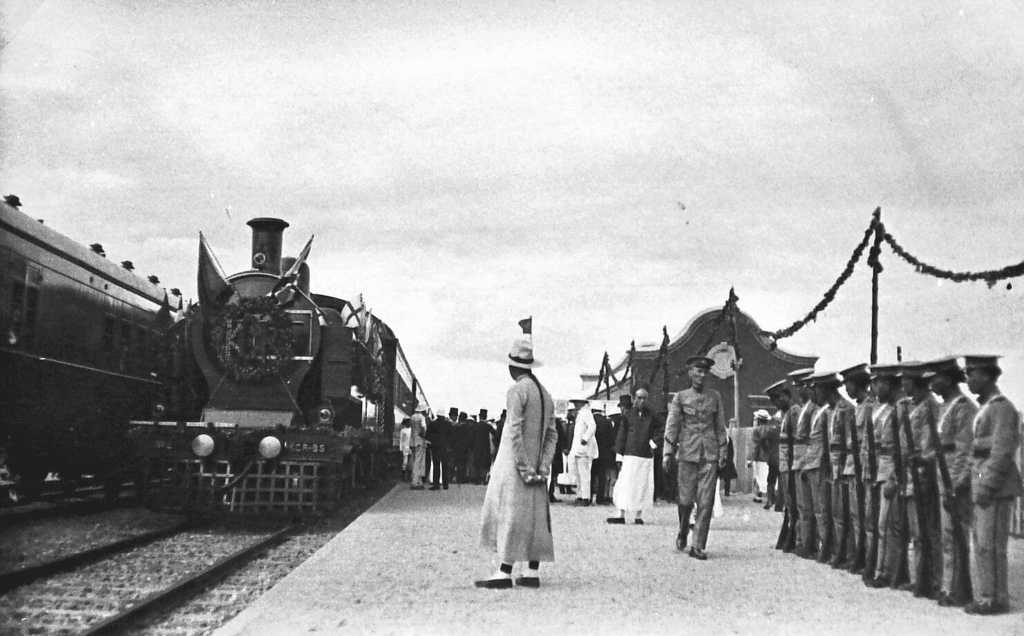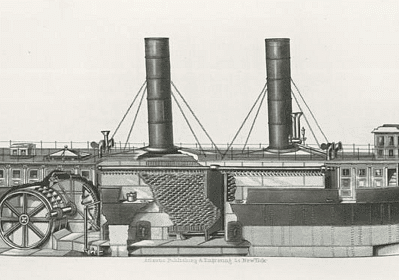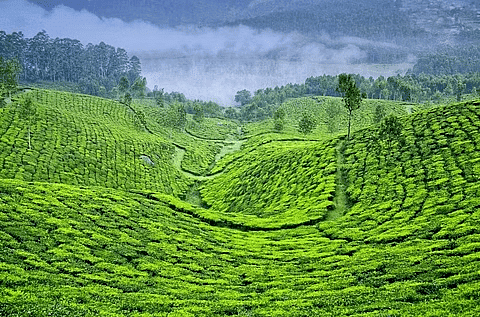NCERT Solutions for Class 9 History Chapter 4 - Forest Society and Colonialism
Q1. Discuss how the changes in forest management in the colonial period affected the following groups of people:
(a) Shifting cultivators
(b) Nomadic and pastoralist communities
(c) Firms trading in timber/forest produce
(d) Plantation owners
(e) Kings/British officials engaged in shikar (hunting)
Ans:
(a) Shifting Cultivators: The colonial government banned shifting cultivation to protect forests, which forced tribal communities to leave their homes and find new jobs. Some of these communities protested the changes.
(b) Nomadic and Pastoralist Communities: In the Madras Presidency, many nomadic groups like the Korava, Karacha, and Yerukula lost their ways of life. Some were labelled as criminal tribes and had to work in factories and plantations.
(c) Firms Trading in Timber/Forest Produce: Before British rule, Adivasi communities could trade forest goods freely. The British restricted this and gave exclusive trading rights to European companies, which hurt local economies.
(d) Plantation Owners: Forest communities like Santhals, Oraons, and Gonds were recruited to work on tea plantations in Assam. They faced low wages, poor working conditions, and difficulties returning home.
(e) Kings/British Officials Engaged in Shikar: British hunting laws restricted locals from hunting, while British officials indulged in hunting for sport. This led to the extinction of some species. Conservationists later argued for wildlife protection.

Q2. What are the similarities between colonial management of the forests in Bastar and in Java?
Ans: The similarities between the colonial management of forests in Bastar and in Java include the following:
- Restriction of traditional practices: Both in Bastar and Java, the colonial government imposed restrictions on local practices such as shifting cultivation, hunting, and collection of forest produce.
- Exploitation of local population: In both regions, villagers faced increased rents and demands for free labour and goods by colonial officials, resulting in their suffering.
- Forced labour in forest management: In Bastar, villagers were required to work for free in the forest department, while in Java, the Dutch introduced the blandongdiensten system, which required villagers to provide free labour and resources for cutting and transporting timber.
- Creation of forest villages: Both regions saw the establishment of forest villages, where villagers were allowed to stay in the forests but had to work for the colonial government, either directly or indirectly through systems like the blandongdiensten in Java.
Q3. Between 1880 and 1920, forest cover in the Indian subcontinent declined by 9.7 million hectares, from 108.6 million hectares to 98.9 million hectares. Discuss the role of the following factors in this decline:
(i) Railways
(ii) Shipbuilding
(iii) Agricultural expansion
(iv) Commercial farming
(v) Tea/Coffee plantations
(vi) Adivasis and other peasant users
Ans:
(i) Railways: They were essential for colonial trade and the movement of troops. To run locomotives, wood was needed as fuel, and to lay the railway lines sleepers were essential to hold the track together. By 1890, about 25,500 km of tracks were laid and more and more trees were cut. In Madras Presidency alone 35,000 trees were being cut annually for sleepers.
 Railways during British Rule
Railways during British Rule
(ii) Shipbuilding: In early 19th-century England, oak forests were disappearing, leading to a timber shortage for the Royal Navy. Without strong timber, ships couldn’t be built, which was crucial for protecting colonies and trade. Within a decade, large-scale tree cutting began in India to supply the timber needed.
 Shipbuliding
Shipbuliding
(iii) Agricultural expansion: The colonial government believed that forests were unproductive. They had to be brought under cultivation so that they could yield agricultural products and generate revenue. So between 1880 and 1920, the cultivation increased by 6.7 million hectares.
(iv) Commercial farming: The British encouraged the production of commercial crops like jute, sugar, wheat and cotton. The demand for these crops increased in 19th-century Europe, where food grains were needed for a growing population and raw materials for industries.
(v) Tea/Coffee plantations: To meet the growing needs for tea, coffee and rubber, large areas of forests were cleared for their plantation. The colonial government took over the forests and gave vast areas to European planters at cheap rates. These areas were planted with tea, coffee and rubber.
 Tea/Coffee Plantations
Tea/Coffee Plantations
(vi) Adivasis and other peasant users: From early times, Adivasis communities traded in goods like hides, horns, silk cocoons, ivory, bamboo, spices, fibres, grasses, gums and resins through nomadic communities like the banjaras. This further declined forest cover.
Q4. Why are forests affected by wars?
Ans: Forests are affected by wars for several reasons.
- Firstly, during conflicts, the demand for resources like wood for construction and fuel increased, leading to extensive deforestation. For example, during the World Wars, many trees were cut down to meet the needs of countries like Britain.
- Secondly, in some cases, warring parties use destructive tactics like the "scorched earth" policy. For example, the Dutch in Java destroyed sawmills and burned large piles of teak logs to prevent the enemy from accessing resources. This strategy can severely damage forests and ecosystems.
- Lastly, wars can cause local populations to exploit forests and their resources. For example, during the Japanese occupation of Java, villagers were forced to cut down forests to expand their farmland, leading to increased deforestation and damage to forest ecosystems.
|
52 videos|437 docs|80 tests
|
FAQs on NCERT Solutions for Class 9 History Chapter 4 - Forest Society and Colonialism
| 1. What were the major changes in forest management during the colonial period in India? |  |
| 2. How did colonial policies affect the lives of forest communities? |  |
| 3. What role did the British forest officials play in managing forests in India? |  |
| 4. What were the reactions of local communities to colonial forest policies? |  |
| 5. How does the study of Forest Society and Colonialism help us understand contemporary environmental issues? |  |

|
Explore Courses for Class 9 exam
|

|













